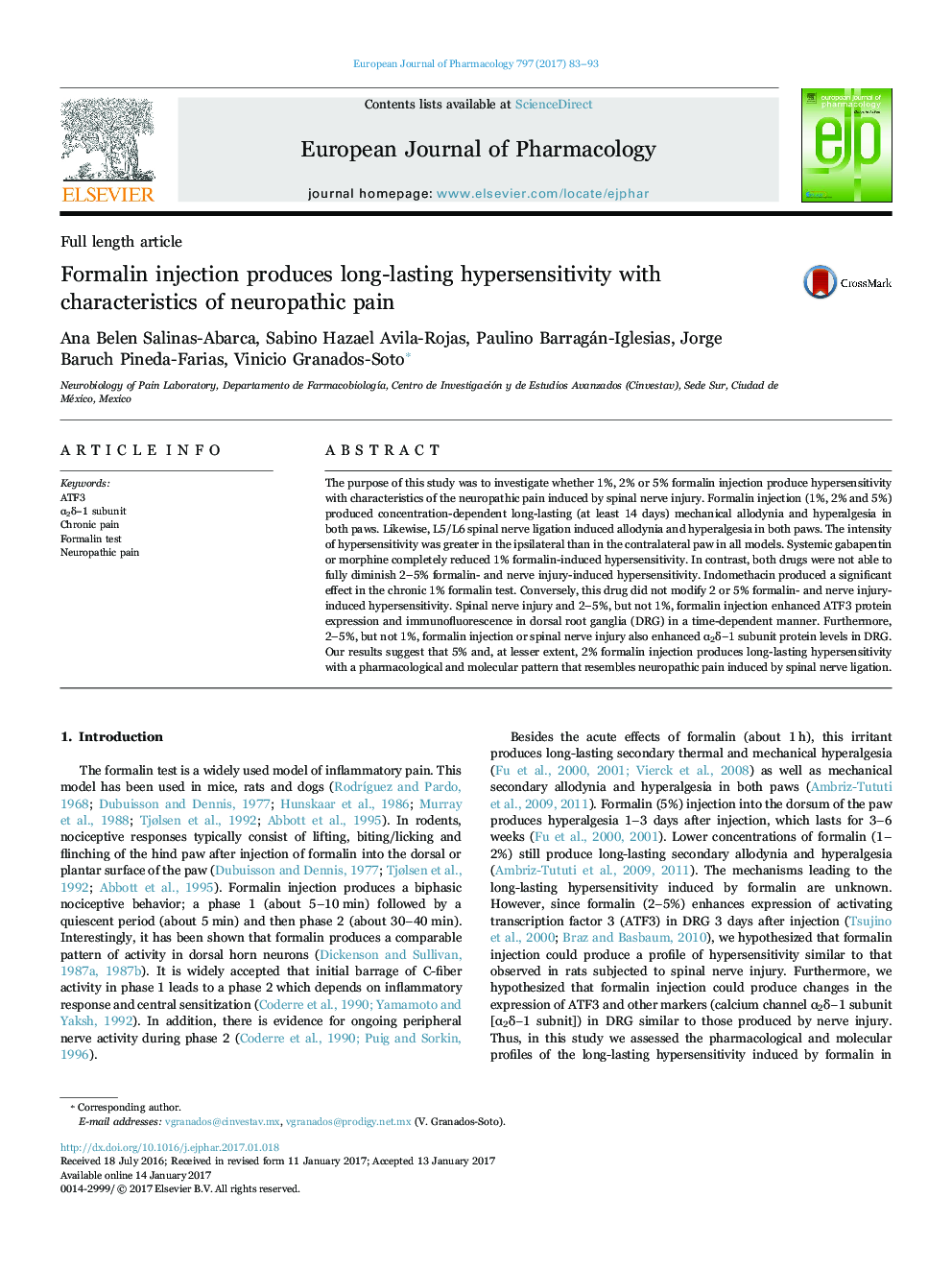| Article ID | Journal | Published Year | Pages | File Type |
|---|---|---|---|---|
| 5554826 | European Journal of Pharmacology | 2017 | 11 Pages |
The purpose of this study was to investigate whether 1%, 2% or 5% formalin injection produce hypersensitivity with characteristics of the neuropathic pain induced by spinal nerve injury. Formalin injection (1%, 2% and 5%) produced concentration-dependent long-lasting (at least 14 days) mechanical allodynia and hyperalgesia in both paws. Likewise, L5/L6 spinal nerve ligation induced allodynia and hyperalgesia in both paws. The intensity of hypersensitivity was greater in the ipsilateral than in the contralateral paw in all models. Systemic gabapentin or morphine completely reduced 1% formalin-induced hypersensitivity. In contrast, both drugs were not able to fully diminish 2-5% formalin- and nerve injury-induced hypersensitivity. Indomethacin produced a significant effect in the chronic 1% formalin test. Conversely, this drug did not modify 2 or 5% formalin- and nerve injury-induced hypersensitivity. Spinal nerve injury and 2-5%, but not 1%, formalin injection enhanced ATF3 protein expression and immunofluorescence in dorsal root ganglia (DRG) in a time-dependent manner. Furthermore, 2-5%, but not 1%, formalin injection or spinal nerve injury also enhanced α2δâ1 subunit protein levels in DRG. Our results suggest that 5% and, at lesser extent, 2% formalin injection produces long-lasting hypersensitivity with a pharmacological and molecular pattern that resembles neuropathic pain induced by spinal nerve ligation.
